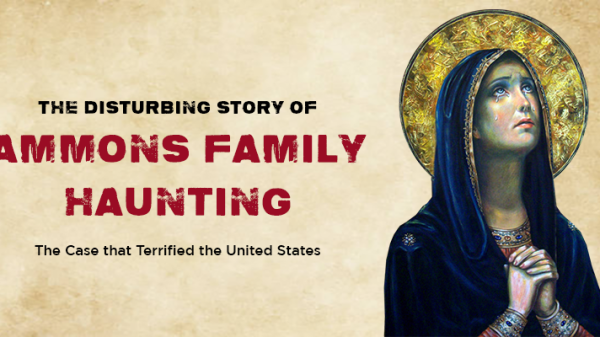The name Mary Celeste involuntarily sends a shiver across every seaman’s spine. After all, man has revered the forces of nature ever since his fascination with things he cannot comprehend began. And the sea continues to be the most dominating of all forces—an endless monster that reaches into the far horizon; a massive entity that exerts dominance unlike any other. We have made revolutionary strides toward making the oceans and waterways safe over the decades and centuries. Nevertheless, perplexing riddles may nonetheless make a lasting impression. The Mary Celeste incident, a crewless ship found in the middle of the Atlantic, is one such foreboding event.
Mary Celeste had quite a reputation even before she was discovered that fateful day in December 1872. Devoid of her crew. During her first journey, her first skipper passed away; shortly after, she sank a brig. However, when she ran aground off the coast of Nova Scotia in October 1867, it was the worst of all blows. She was sold to a different owner, who decided to launch the ship back into the sea. The ship, however, wasn’t finished with her bloodlust, and this time, she wasn’t after just one person. She had the entire crew on her mind.
The Fateful Journey of Mary Celeste
Having fallen aground a few years prior, Mary Celeste underwent a considerable renovation before embarking on her tragic voyage in November 1872. She carried 1701 barrels of booze and was in perfect condition when she left. The crew was young but competent, and the captain, Benjamin Briggs, was an experienced sailor. The ship was supposed to leave port on November 5th, but a storm saw to that. But on the seventh, the weather improved, and Mary Celeste departed. It would be the last time her crew would ever be seen again.
Mary Celeste was found on December 4, 1872, off the Portuguese coast by the ship Dei Gratia. Mary Celeste didn’t respond to any signals, so the captain of the Dei Gratia decided to investigate as she wandered aimlessly in the wind. The captain of the Dei Gratia dispatched two of his own men to the Mary Celeste. The words Mary Celeste was scrawled on her stern, and the couple soon learned her identity. However, when they climbed the ladder and entered the deck, a terrifying scene awaited them.

(Left) The Mary Celeste (Right) An Artist’s Rendering of The Mary Celeste Being Discovered
There were no people on board. The sails were in bad shape; some were pulled, and others were gone from the mast. Though one of her secondary hatches was open, her main hatches were shut. The ship also had a lot of water in her hold, and her lifeboat was nowhere to be found. Of all the chaos, one thing was abundantly clear: The crew had abandoned the vessel halfway across the Atlantic because something unfortunate had transpired.
The ship’s log, with its most recent entry dated nine days earlier, was found by the trio in the captain’s stateroom. Those notes identified the ship’s last known location as being 400 miles away. No signs of a conflict indicated that a mutiny had not taken place. Furthermore, the ship also had ample provisions and was in good shape, leading the men to wonder what caused this hasty departure.
The captain of the Dei Gratia was informed of these facts and made the decision to salvage the abandoned ship and bring it to Gibraltar, the closest port. As soon as she arrived, the authorities seized the ship and held her for further investigation.
Theories and Explanations
Mary Celeste’s presence sparked numerous court appearances and legal disputes. The crew of the Dei Gratia was immediately suspected since the court thought they had plotted and falsified the ship’s log. They thought the whole affair was somehow connected to the crew of the Dei Gratia gaining control of the Mary Celeste for her alcohol cargo, rather than anything otherworldly. Further inspection of the ship revealed huge gashes and slashes that appeared to have been purposefully created on the bow to mimic a collision or stormy sea, and the captain’s sword, which was discovered under his bed, had traces of what appeared to be blood. Additionally, a blood-like material was found on the rails, and the interior of the ship had severe splits that the authorities determined were caused by a large axe.

Theories From the Kraken to Pirates Have Been Put Forward
This barrage of denials and defenses, however, suffered a serious defeat when it was eventually established through science that the compounds were not blood. Therefore, what went wrong? Why was a great ship left in the middle of the Atlantic? What motivations might there be? We need to take a step back, though, in order for the enigma to become clearer.
The captain of the Mary Celeste and the captain of the Dei Gratia were close friends who were planning on retiring soon. Because of this, many people assumed it was a well-planned insurance scam. Furthermore, the ship had substantial insurance coverage. The idea does, however, have several shortcomings. Let’s start by asking where Captain Briggs was. And Mary Celeste’s crew? Also, why did the captain bring his own family on board if the ship was going to be abandoned in the middle of the Atlantic?
The intactness of the goods swiftly disproved the pirate theory. Finally, the theory suggested that nature was to blame. The seamen are thought to have smoked below the decks, and the alcohol in the hold, which had built up fumes, resembled a minor explosion. The captain, the officers, and the crew, unfortunately, summarized that a huge explosion was about to ensue, and as a result, they all piled into a lifeboat and fled.

The Wreck of The Mary Celeste Today
Even if a lifeboat had been secured to the ship with a rope, the heavy seas may have caused the rope to come undone, leaving the crew defenseless against the elements. Mary Celeste, meanwhile, drifted off and showed up nine days later close to the Portuguese shore. The crew’s survival is quite doubtful, and one can only pray that they died suddenly rather than slowly from malnutrition.
Mary Celeste continued to be bought and sold after the tragedy. However, she had a reputation that predates her name and became even more dreaded after the death of a third captain while he was in charge. The ship was almost always a loss for the shipping firms, but in 1884 she was finally auctioned off permanently and purposely grounded as part of an insurance scam. The defendants were released (without the insurance money they demanded) as a result of the scandal at the time, but shortly after, one of them committed suicide and the other went insane.
Mary Celeste’s curse had struck once more.
Bet you liked the tale! Or should we say, a historical account? Well, we got plenty more. Next, you can read about The Dancing Coffins Of Barbados and The Shocking True Story Behind The Conjuring! Oh, and Happy Halloween!










































